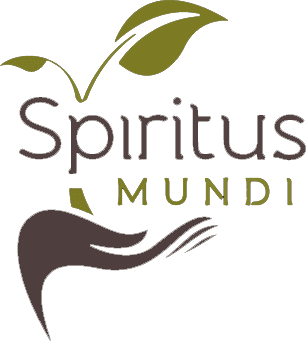HI! I am Michele, founder of Easy Green Hosting and in this article I will address a very important topic for the life of any website: its indexing on Google, the undisputed leader of content searches on the Web (and not only!) and how to optimize it better with 3 key aspects: sitemap, SEO and site loading speed.
1st KEY ASPECT: THE XML SITEMAP
What is the sitemap? As the word says, it is a site map and there are two types: “graphic” or HTML and XML. The graphical sitemap is a simple page that graphically displays a map of the site's contents, i.e. an index of all the pages, while the XML sitemap, which we are dealing with in this article, is the same thing but in a specific format, XML precisely, made to be interpreted by an electronic computer.
Below you see a graphical sitemap on the left and an XML on the right

If you have finished creating a site and want Google to analyze and index all its pages as soon as possible, you will need to:
- have your site generate an XML sitemap
- register your domain on Google Search Console
- add the sitemap URL to Google Search Console
How to do these three actions? It is not difficult.
As usual we will see how to tackle this job on a WordPress site.
I try to be as concise as possible!
to. How to generate an XML sitemap
There are various plugins that generate sitemaps https://wordpress.org/plugins/search/sitemap/
What I recommend, not only for the sitemap but also for SEO, which we will address later in this article, is RankMath. Simply install it to immediately get a page similar to ilmiosito.com/sitemap.xml
b. How to register your domain on Google Search Console
Again I will mention the simplest way. All you need to do is have an already active Google account (an @gmail address, so to speak) and install the plugin Site Kit by Google. Once installed, you will have to request the activation and registration of your site on Google Search Consile by following the instructions given by the plugin.
Google Search Console is a very useful tool for monitoring indexing on Google. Warning: it is not used to analyze visit statistics, for those there is Google Analytics, but to make small changes to Google's SERP (search engine result page) such as for example indicating that a page has been moved to a new address or a entire site has been moved to a new domain and to receive notifications regarding any indexing errors.
c. How to add sitemap URL to Google Search Console
Google Search Console is finally used to register the sitemap. As?
At this point it's very simple


That is: I click “Sitemaps” from the main menu and then “submit” after writing the sitemap address.
Indexing will take some time, hours or even a few days, depending on mysterious Google variables.
2nd KEY ASPECTS: SEO or Search Engine Optimization
In all honesty, I think it's an overused topic by now! So even in this case I will be as brief as possible.
L’search engine optimization in the past it was the art of bypassing search engines to make one's site appear on the first page, while nowadays search engines have perhaps become almost smarter than human beings and all we can do is hope not let them cheat us one day!
In any case, it is about:
- produce a site with good quality pages that can be used by humans
- help the search engine (the undisputed king Google) to interpret those pages in the most correct way
How to produce a site optimized for search engines?
It's about trying to get under the feet of many people at the same time and write the pages in such a way that all these people say "ah, interesting" or "useful", or "ok, yes, I was looking for exactly this" and other things like that, so:
- write so the pages don't look like bricks. Consider that the attention of readers on the web is very limited. Try to space out the paragraphs by placing: spaces, images, bold words, bulleted or numbered lists and anything that gives "breath" to the text
- write putting the most important concepts at the top of the text: Remember that attention is limited. If you talk about recipes, write immediately what recipe it is and how it is prepared and only after additional considerations
- Name the images so that they represent the content: if you put a photo of a loaf of bread in a cooking article, you can call the image “Gismonda's bread recipe” (if your blog is perhaps called “Gismonda's recipes” the unclean... although perhaps with a name like that Gismonda could sell something else... like detergents I mean, what were you thinking??)". This is because people also often search by images and Google will be able to make a good match between search and result more easily.
- Use H tags for titles: This way you will help google understand the content hierarchy.
H tags work like this:- H1 MAIN TITLE: in this article it is “Sitemap, SEO and speed: the 3 key aspects to obtain good indexing on Google.”
- H2 SECONDARY QUALIFICATIONS: in this article the first is “1st KEY ASPECT: THE XML SITEMAP”
- H3 HIERARCHICALLY LOWER TITLES, like “a. How to generate an XML sitemap
and so on".
Come fare con WordPress?
If you use the standard editor: on the one hand you change the type of text (paragraph or title or other),

on the other you change the level of the title (h1, h2, h3, etc)

Obviously consider that if you talk about things that no one searches for on the Internet or for which there is already an enormous abundance of resources, you will have little chance of being found. In similar cases you will have to "create" the iteresse, that is, tease groups of people. But here I am delving into the field of marketing, a fascinating but different discipline compared to the topic of this article.
How to help Google index pages?
This is where Rank Math, which I talked about at the beginning, comes into play.
In short Rank Math helps you write better “meta tags”, also called “snippets”.
Meta tags are descriptions (title and description) contained on each page which are communicated to Google for indexing and which are shown in search results.
The title tag also appears at the top of browser tabs. The Title meta tag in this case is “Lercio | The dirt that makes the news."

There are 2 meta tags to consider: Title and Description, which are the ones that will then appear on Google's SERP, i.e. in the results:

So they are texts that speak to Google and the rest of the world at the same time.
They must be usable by EVERYONE and being one of the many results on a search page, they must attract enough attention to be clicked.
If we have RankMath, to modify the meta tags simply click "Edit snippet" among the options found in the right column of our WordPress editor

Once inside, you will also find the "permalink" field which corresponds to the URL or the address of the page. It is good practice to leave it identical to the title.
3rd KEY ASPECT: THE SPEED OF LOADING OF THE PAGES
Google has an extremely complex system for measuring the value of a site, a value it uses to then offer the most suitable results in searches. By ideonei I mean "organically" appreciable, that is, of real interest and usefulness.
Let's be clear: Google is mathematics, science, therefore approximation. Everything it produces is the result of statistics and statistics are representations of reality but never reality itself. So if you like something and you can't find it on Google, at most this can mean that you have a heart 💙.
Having said that, among the aspects we have already covered, one of relative importance is page loading speed.
The speed of a site depends on 2 things: the site itself (how it is made) and the server.
Regarding the server, with Easy Green Hosting you are in an iron barrel! There are so many resources available and the hardware and software are of the latest generation, so the performance is very high. I won't go into technicalities, but just to give an idea, one of the leading web hosting providers (perhaps THE leader) offers 1 vCPU and 0.75GB of vRAM for each site (equivalent to a cpanel) at prices around 300 € per year. We offer 2vCPU and 4GB of vRAM for €86, which includes SSL, backup, CDN and so on, all things that famous leader charges separately.
It's quite a leap, both in terms of resources and price.
As regards the site, i.e. the way in which the pages are built, the responsibility is yours, but you can still achieve excellent results with a few simple tricks.
Below I list 3 important aspects to take into consideration.
1. I PLUGIN
If you have many active plugins on WordPress, you know that each time the server may have to occupy perhaps 1GB of RAM to run them and time to process them at each visit. The ideal is to have as little as possible so the advice is: be economical with plugins. Furthermore, plugins are the only real source of site hacking (if you keep WordPress core updated), especially if they are abandoned and no longer updated plugins.
2. IMAGES AND VIDEOS
If your homepage has 10 images of 4MB each, to be loaded the server will have to transfer 40MB of images to your device, which takes up not only time but also resources (electricity) and burdens everything: server, network and mobile phone or computer. Considering that 80% or perhaps more of visits come from mobile phones, the ideal is to have images that do not exceed 150KB each or even less.
If you already have a site devastated by non-optimized images or you don't know how to optimize them before uploading them to the site, you can use a plugin called Imsanity: It's 100% free and works great. Optimizes images as they are uploaded and optionally also reduces previously uploaded images. In short, that's what you call a tip!
3. PLUGIN CACHE – LITESPEED
Last but not least is loading the plugin Litespeed, which makes your site take advantage of the capabilities of creating cache images of your site in special memories, called cache memories or buffer. In this way the server will not have to process the construction of the pages at each visit, but will be able to offer one‘image, as if it were a photograph already taken of that page, thus saving energy and time.
To know more:
https://www.easygreenhosting.com/litespeed-web-server-gratuito/
If you want help configuring Litespeed, open a ticket from your customer area, we will be happy to do it for you without obligation.
By saving energy, with Litespeed you will be promoting our environmental cause, so for us it's just a pleasure!
That's all for now.
I hope you enjoyed reading it.
Good work!








